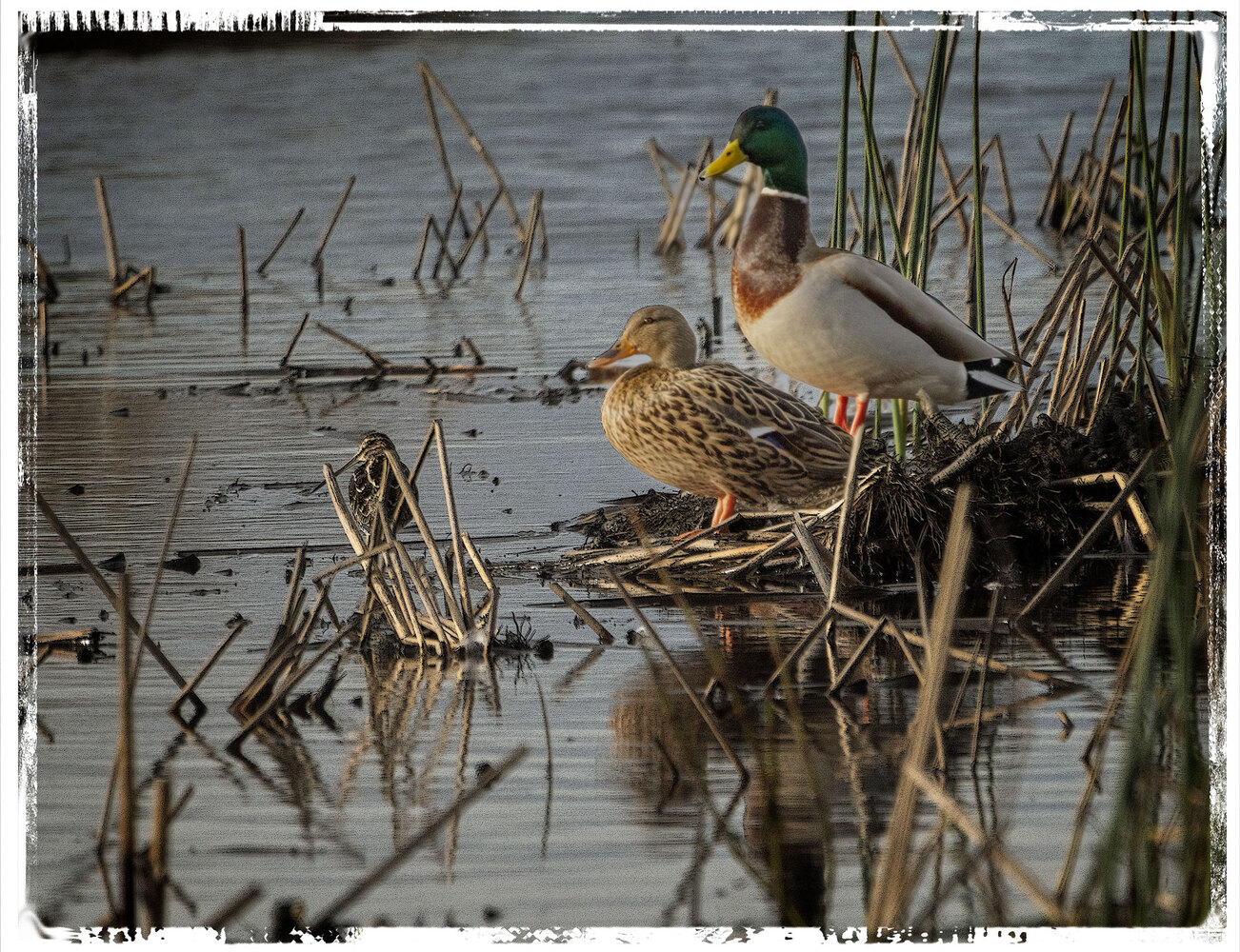I just read an article where purists argue that you should only use what directly comes out of the camera and shouldn’t “Photoshop” it. Actually, I’m somewhat sympathetic to that view. I really don’t like when the colors in scenics have been manipulated to make them more colorful than they really were.
I usually work toward trying to recreate what I “saw,” or “what I wanted to see” when I took the picture. Unfortunately, all too often the camera sees things I didn’t see when I took the picture. When I take bird pictures, I focus exclusively on the bird, which is all my brain sees, but the camera often sees more, or less, than what I see.
I taught high school Yearbook/photography for 20+ years and took several college photography courses, not to mention another year or two in art courses. Those courses have shaped what I want from a picture and how I approach photography.
My background is just one factor in my photography. I have spent way too much on camera equipment since I retired 25 years ago, but the equipment has improved so much in that time that I felt compelled to upgrade regularly. I use the best equipment that Canon sells. I used to joke that my camera equipment was worth more than the car that took me cross country, and it was literally true.
Equipment improvement has been accompanied by equally impressive improvements in software. I regularly use Lightroom, Photoshop, and ON1 on all the pictures I post on my site. I shoot exclusively in RAW format to take full advantage of that software.
One of my greatest complaints with shots I get is that the highlights are blown out and you can’t see white feathers. Because of that, I almost always set my camera to one stop below what the camera recommends, because it’s easier to restore details in dark areas than to correct bright areas.
Here’s a shot from Sacramento NWR right out of the camera. Truthfully, it’s fairly close to what I saw myself because the Snipe was hunting in the shadows and the sky was very bright.
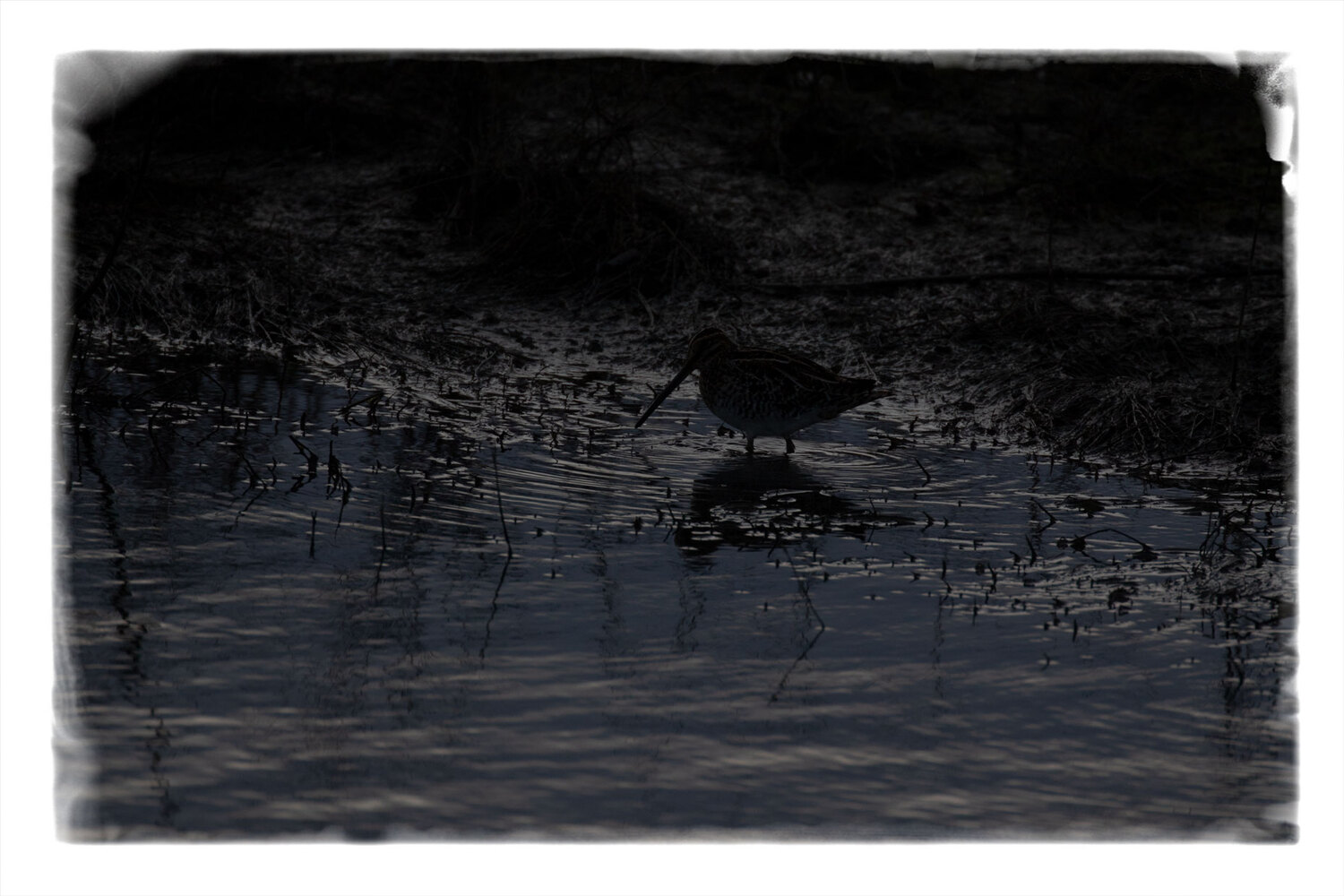
Obviously I wouldn’t have posted this shot except to make a point. Fortunately we were shooting in RAW format, not JPEG. RAW format actually combines multiple exposures so you can make dark areas lighter and lighter areas darker.
Here’s another shot from the same sequence that was run through Lightroom, Photoshop, ON1 Denoise, and ON1 Effects. It’s not a great photo, but it’s clearly a Snipe. and you get an idea of its size (if you know how small a Green-winged Teal is).
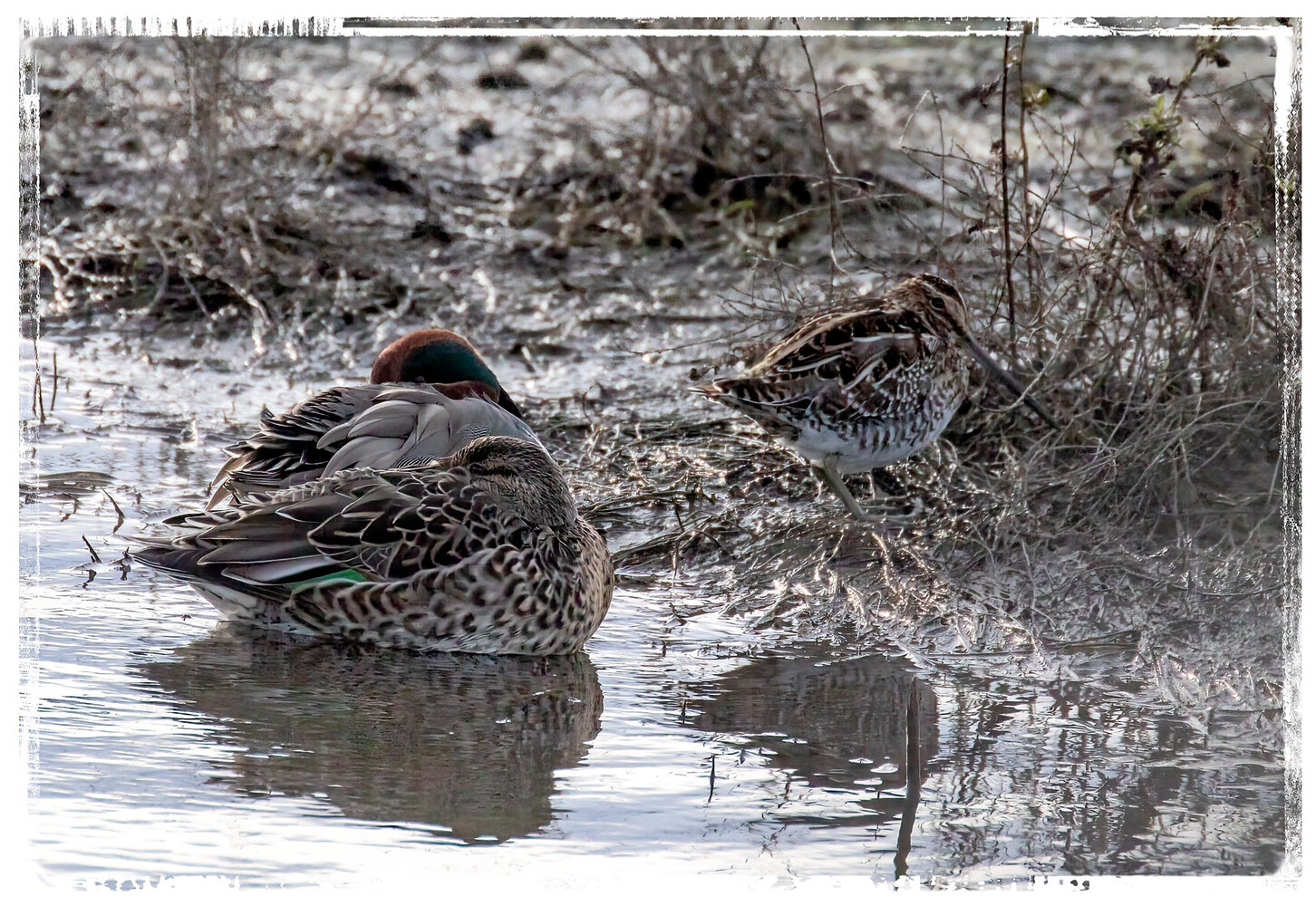
When you’re taking pictures of birds, light is not your only, or, perhaps greatest, problem. The hardest thing is getting the bird in focus, particularly when you’re using a telephoto lens.
Here’s another shot in the sequence where the camera had a hard time focusing and was extremely noisy because it was so dark. I think the camera focused on the plants to the right of the Snipe, rather than the Snipe itself. I used denoise and sharpening to try to realistically show the Snipe.
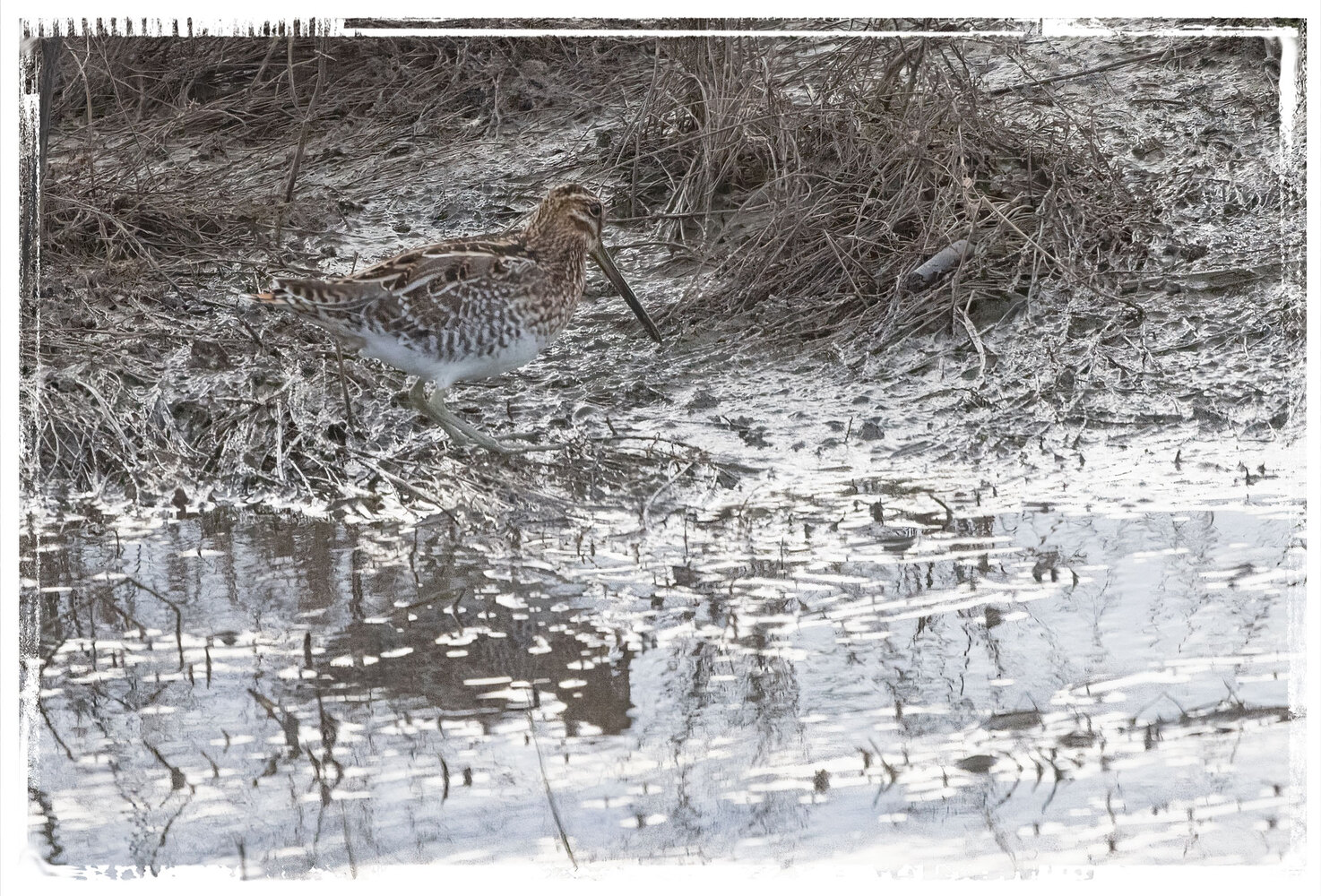
It’s hard to blame the camera, though, since the Snipe is a master of disguise and uses camouflage to stay alive while feeding in the reeds, making focus quite difficult.
The camera did a much better job of focusing on this Snipe because it was in the water and there weren’t any bushes nearby.
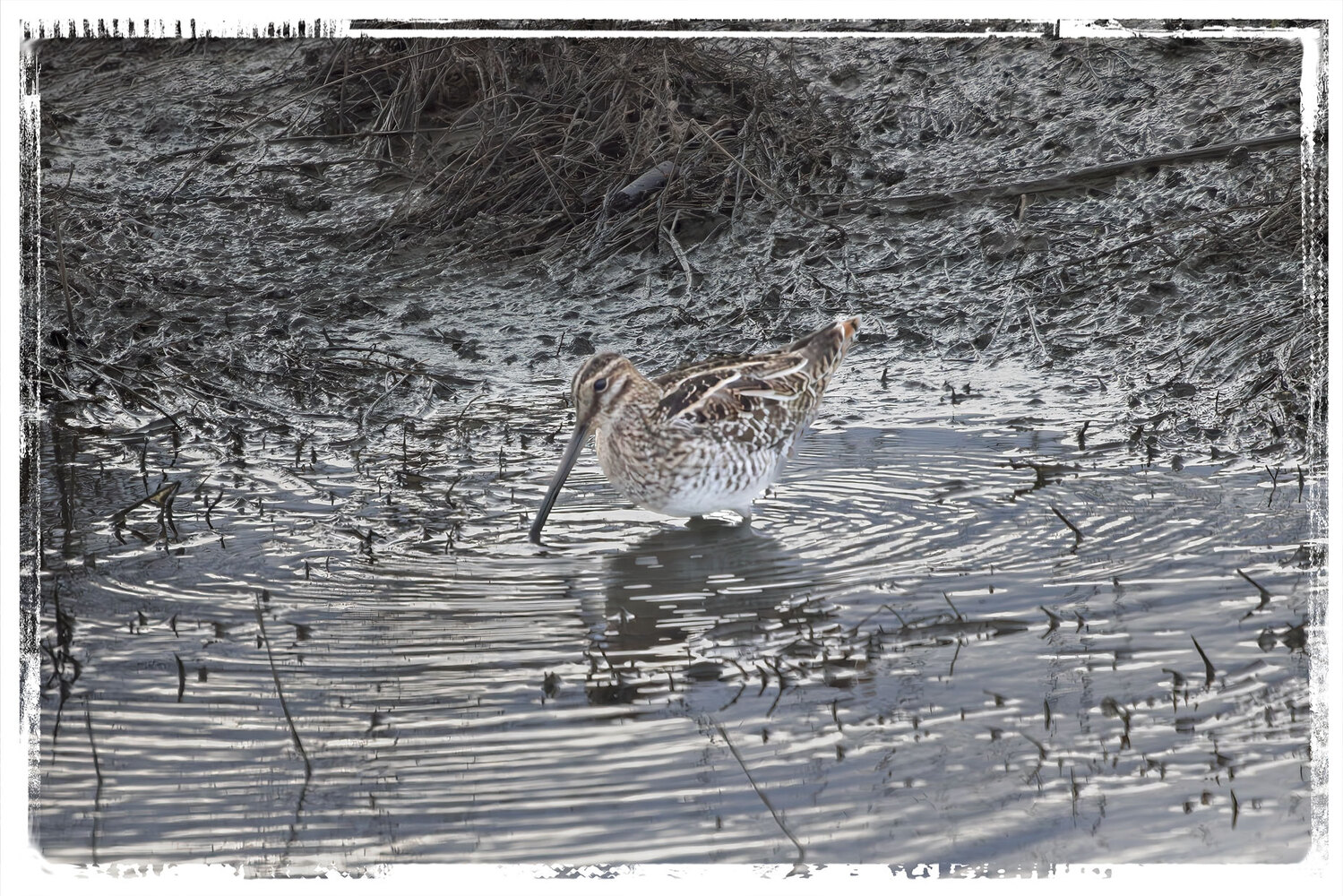
I rarely see Snipes and good shots are even rarer. So, despite the fact that the light is far from ideal in any of these shots, I was happy to get them. I know what a Snipe looks like in good light, so I attempted to recreate that reality by making adjustments in Lightroom, Photoshop, and ON1.
They aren’t great pictures, but I’m pretty sure that there will be readers who have never seen a Snipe and, like me until a few years ago, think a Snipe is an imaginary bird meant to distract you so your older brother can have fun without you.
Footnote
I took this shot of a pair of Mallards because I loved the lighting and setting and thought it was a great pose. Guess who photobombed it?
